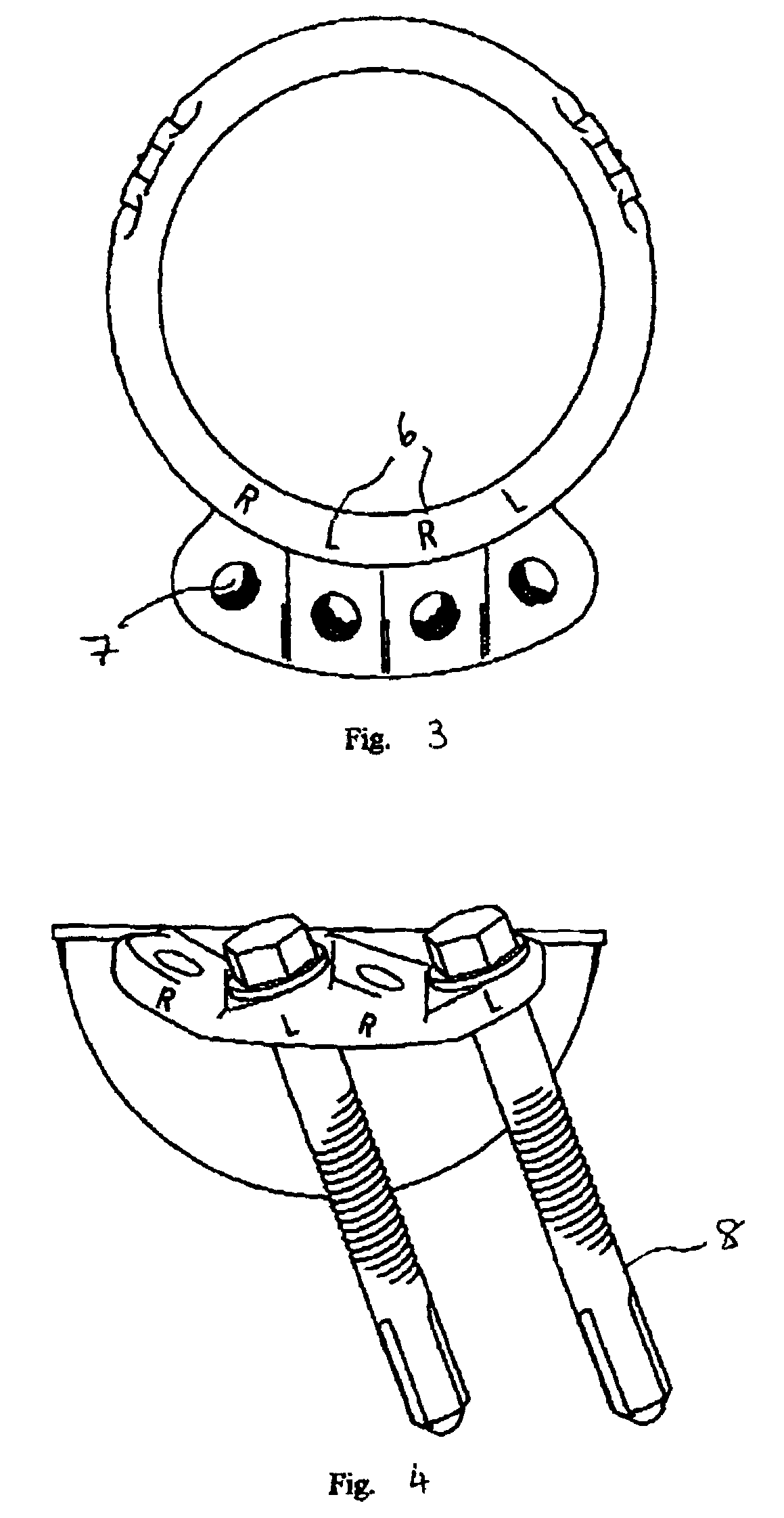Prosthesis
a technology of protruding acetabular parts and flanges, applied in the field of prosthesis, can solve the problems of reducing the risk of cross-section as the screw is inserted into the aperture in the flange, affecting the function of the flange, and reducing the risk of cross-section as the screw is inserted into the apertur
- Summary
- Abstract
- Description
- Claims
- Application Information
AI Technical Summary
Benefits of technology
Problems solved by technology
Method used
Image
Examples
Embodiment Construction
[0053]As illustrated in FIG. 1, the acetabular component of the present invention comprises a cup 1 which has a convex outer surface 2 and a rim 3. A pair of flanges 4 extends form the outer surface 2 at a point adjacent to the rim 3 at an angle θ to the plane p1 of the rim 3. In the illustrated embodiment θ is in the region of 20°. Lugs 5 may be present to prevent rotation and to facilitate the attachment of the cup to a gripping tool used during implantation. An example of a suitable tool can be found in GB2323036.
[0054]Where two pairs of flanges are used which are contiguous an arrangement of the type illustrated in FIG. 2 will be appropriate. Here each flange 4a and 4b is placed at an angle α to the plane p2 which passes through the apex of each flange. In the illustrated arrangement α is 20°. The two flanges making up each pair are at an opposite orientation and corresponding flanges from each pair are parallel. Thus the two flanges 4a are parallel as are the two flanges 4b. Fl...
PUM
 Login to View More
Login to View More Abstract
Description
Claims
Application Information
 Login to View More
Login to View More - R&D
- Intellectual Property
- Life Sciences
- Materials
- Tech Scout
- Unparalleled Data Quality
- Higher Quality Content
- 60% Fewer Hallucinations
Browse by: Latest US Patents, China's latest patents, Technical Efficacy Thesaurus, Application Domain, Technology Topic, Popular Technical Reports.
© 2025 PatSnap. All rights reserved.Legal|Privacy policy|Modern Slavery Act Transparency Statement|Sitemap|About US| Contact US: help@patsnap.com



